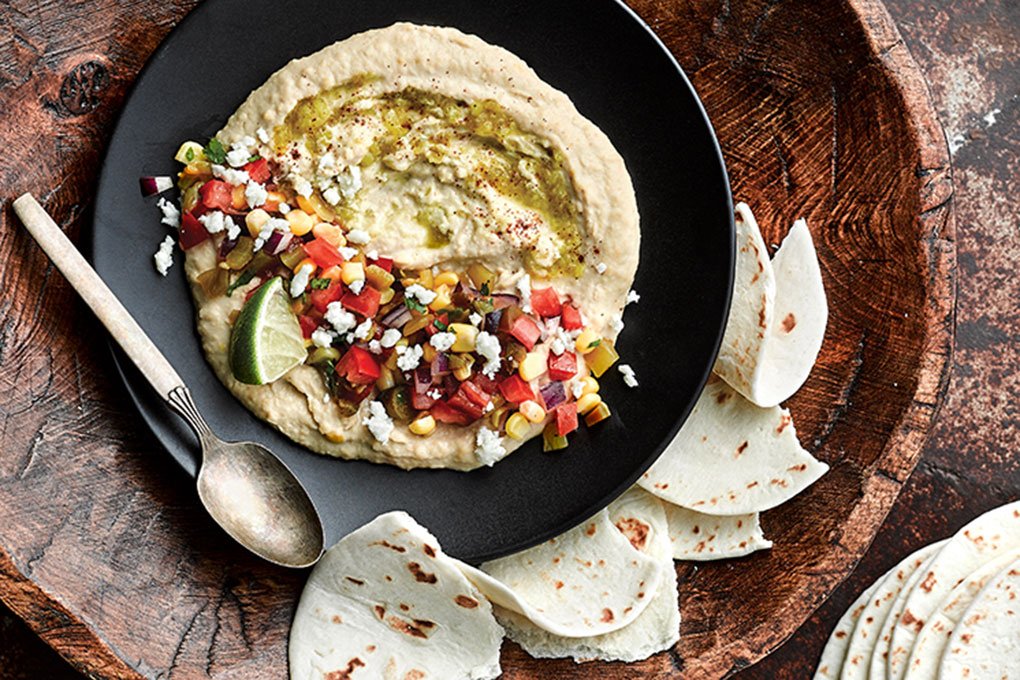With consumers showing hummus so much love, there’s an opportunity for menu differentiation through creative play in flavor combinations—both in the hummus and atop.
“Hummus has undoubtedly had a good run so far, but it’s meteoric rise in America has just begun,” says Jorge Cespedes, culinary creative director with Marlin Network, based in Springfield, Mo. “It’s been successful up to this point because of its nutritional value, ease of preparation, shareability, and unique flavor profile.”
There’s so much more to explore with plant-based purées, from flavor combinations and toppers to formats beyond dips. “I see these types of purées as blank canvases,” he says. “When chefs get creative and add new flavors such as a spinach and arugula, pesto, red beet or roasted carrot purée, things get very interesting on the plate.
“I recently tasted a charred eggplant and white bean purée at an Argentinian steakhouse in Miami. It was the best thing on the menu,” says Cespedes.
Top This
Five creative ways to top plant-based purées, lending flavor, texture and menu differentiation:
- Roasted and salted pepitas, hot sauce, Cotija cheese and fresh cilantro leaves, drizzle of lime juice
- Heavily seasoned chickpeas with a Moroccan spice blend, garlic-infused extra-virgin olive oil, small-dice avocados and Maldon salt
- Small pieces of sweet figs, lemon zest, drizzle of honey, sprinkle of Italian oregano and a little sea salt
- Mango chutney, slivered almonds and red pepper flakes
- Sun-dried tomato, harissa paste, roasted sunflower seeds and ground sumac
Commit to the Experience
With hummus now a regular on shareables menus, it’s important to signaturize the experience. Cespedes suggests a strategy of flavor system play:
- Start with your base ingredient. Choose what variety of bean you’d like to use—Great Northern for creaminess, black bean for big flavor, chickpea for familiarity, and so on. This decision will determine the texture, color, and flavor of the purée.
- Decide which flavor to pair with your base. Go global or play out fan-favorite profiles. Consider textural contrast through toppings like spiced seeds or nuts, and drizzles of oils, then high-impact finishes of spices or other seasonings.
He offers up two thought starters:
Global
Valencia-inspired bean purée—
garbanzo bean base + roasted piquillo peppers + orange zest + cured sausage pieces + Spanish extra-virgin olive oil + Mediterranean sea salt + saffron
Fan-Favorite
Nashville hot bean purée—
Black eyed peas and garbanzo bean base + drizzle of Frank’s hot sauce + crispy-fried chicken skins seasoned with chili powder
Find the Mexi Hummus recipe (pictured above).









